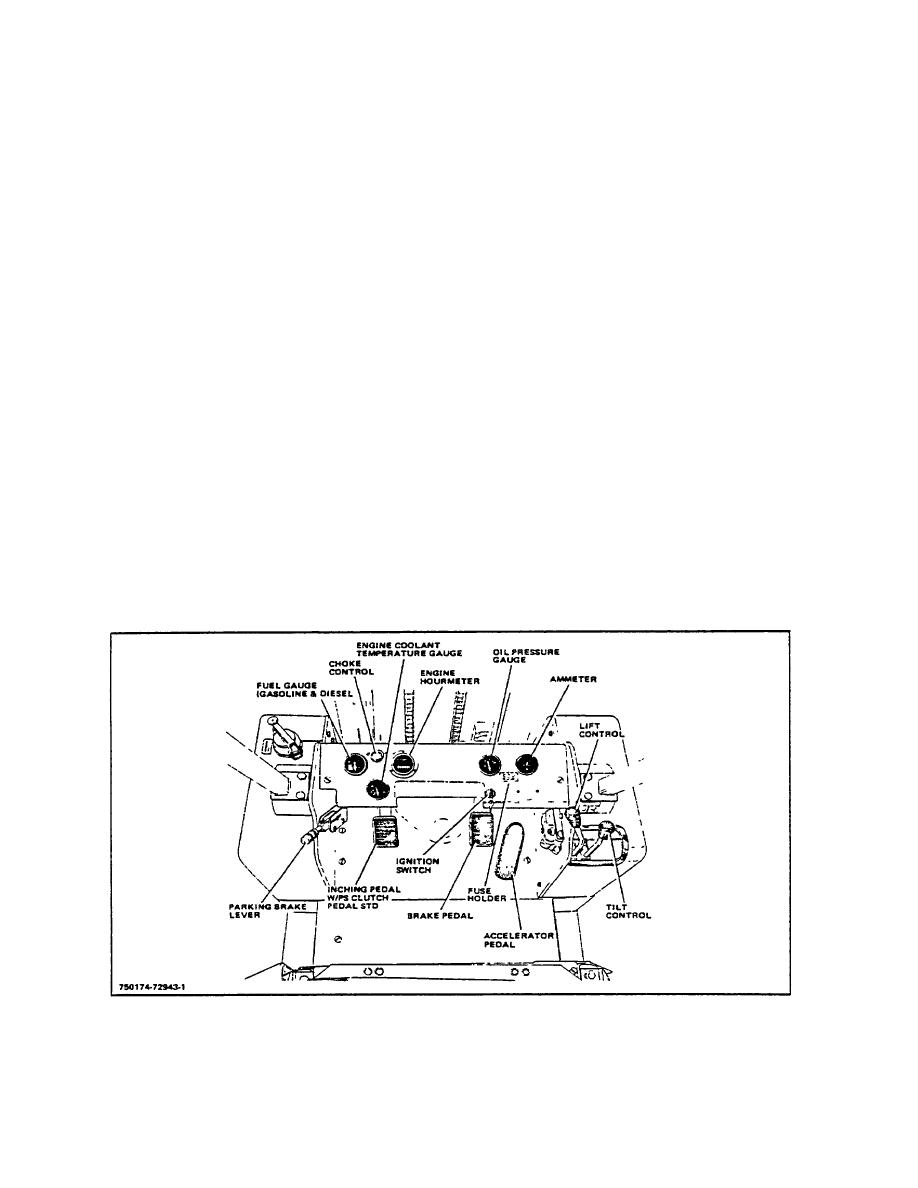 |
|||
|
|
|||
|
|
|||
| ||||||||||
|
|
 TM 10-3930-644-14&P
TOPIC 9. INSTRUMENT PANEL
A. DESCRIPTION
may remain high for some time. If the ammeter
indicates a "discharge" condition when engine is
The truck instrumentation consists of the following
operated above idle speed, then the alternator is
components:
an oil pressure gauge, a coolant
not producing current, or there is a short in the
temperature gauge, fuel gauge, ammeter and engine
circuit.
hourmeter. All the instruments are mounted on the
instrument panel and are display oriented for ease of
2. Oil Pressure, Coolant Temperature and Fuel
use. Also mounted on the instrument panel are the
Gauges:
ignition switch, the electrical fuses and the manual choke
control.
The oil pressure, coolant temperature and fuel
level gauge all operate similarly in that one side
1. Ammeter:
of each gauge is tied to the ignition switch, while
the other side is connected to the respective
Connected directly into the battery circuit, this
sensing sender unit.
gauge indicates the status of the battery and the
direction of current flow. Pointer deflection to
The oil pressure sending unit mounts on the
the "charge" side of dial face indicates that the
engine oil gallery, the coolant temperature
battery is being charged by the alternator and
sending unit is located in the cylinder head
pointer deflection to the "discharge" side of dial
coolant outlet passage, and the fuel level
face Indicates that the battery is discharging.
sending unit is installed in the fuel tank
Normally, the "charge" rate will be high for a
assembly. The rheostat sensor in the sending
short time after starting engine, with pointer
unit allows more electrical current to flow
returning to slightly above zero after a few
through the respective gauge deflection coil as
moments of operation. However, if battery is run
the oil pressure increases, the engine coolant
down,
the
"charge"
rate
becomes warm, or as the fuel tank is being
filled.
Figure 9-1. Instrument Panel (Power Shift) (Typical)
M-146-1
2-35
|
|
Privacy Statement - Press Release - Copyright Information. - Contact Us |